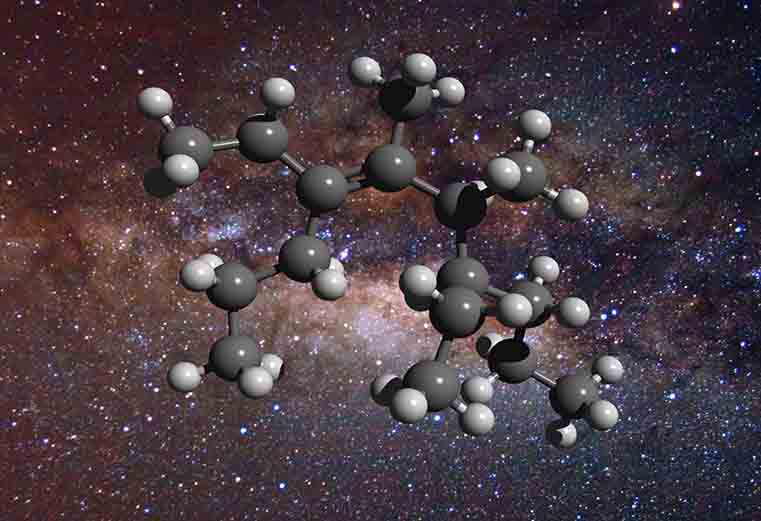Home / Scientists Uncover Cosmic Molecules That Capture Carbon
Scientists Uncover Cosmic Molecules That Capture Carbon

In an unexpected revelation, researchers have identified that certain cosmic molecules possess unique properties that are instrumental in advancing carbon capture technology. These celestial compounds, often formed in the harsh conditions of outer space, have exhibited a remarkable affinity for CO2, making them potential game-changers in the battle against climate change. Their high efficiency in adsorbing carbon dioxide not only enhances existing capture processes but also opens new avenues for sustainable energy solutions. Using these molecules may significantly reduce reliance on traditional carbon capture materials, which can be costly and resource-intensive to manufacture.
The implications of utilizing cosmic molecules extend beyond just improving capture techniques. These compounds possess remarkable stability and resistance to degradation, which can lead to extended functionality in various environmental conditions. Moreover, their adaptability suggests that they could be engineered for specific applications, including integration into existing infrastructure or even in direct air capture systems. By leveraging these stellar materials, scientists can potentially create a more robust framework for reducing atmospheric carbon levels, aiding in global efforts to meet climate targets and establish a cleaner, more sustainable future.
Insights into the Mechanisms of Carbon Absorption in Outer Space
Recent research has illuminated the intricate mechanisms that govern how carbon is absorbed in the cosmos, propelling our understanding of interstellar chemistry and its implications for planetary atmospheres. Scientists have identified a series of cosmic molecules, critical players in the capture of carbon, which operate under extreme conditions prevalent in space. Notably, these molecules facilitate carbon fixation in regions with low temperatures and high radiation levels. The dynamics of these processes suggest that they could be foundational to the development of life-supporting environments beyond Earth.
Key findings from the study reveal that various factors contribute to the efficacy of carbon absorption in the universe, including:
- Environmental Conditions: The unique physical and chemical properties of different celestial regions enhance or inhibit the absorption processes.
- Molecular Interactions: Complex interactions between carbon-bearing compounds and other cosmic elements play a vital role in the fixation process.
- Stellar Influences: The presence of nearby stars can affect the chemical reactions that lead to carbon absorption, altering the state of matter involved.
These insights not only provide a clearer picture of carbon cycling in space but also lay a foundation for understanding how carbon-rich compounds might influence the potential for habitability on exoplanets. As researchers continue to probe the cosmos, the knowledge gained from these mechanisms could inform future space exploration initiatives aimed at detecting signs of life beyond our terrestrial confines.
Potential Applications of Cosmic Molecules for Earthly Climate Solutions
Recent discoveries of cosmic molecules have sparked excitement in the scientific community, particularly regarding their potential to combat climate change on Earth. These molecules, known for their robust properties in extreme environments of space, may serve as the foundation for innovative carbon capture technologies. By mimicking their structural and reactive abilities, researchers are exploring methods to develop materials that can efficiently absorb atmospheric CO2. Such advancements could lead to the creation of systems that not only sequester carbon but also facilitate its conversion into useful products, thereby addressing two pressing challenges: climate change and resource scarcity.
Furthermore, this research aligns with ongoing efforts to enhance existing carbon capture systems, making them more effective and economically viable. The potential applications include:
- Enhanced Carbon Storage: Utilizing cosmic-inspired compounds to improve the durability and capacity of storage mediums.
- Carbon Utilization: Transforming captured carbon into sustainable fuels or other valuable chemicals, decreasing reliance on fossil fuels.
- Climate Resilience: Developing materials that can clean the atmosphere, potentially reversing some impacts of climate change.
As the field progresses, interdisciplinary collaborations between astrophysics and climate science may yield unprecedented breakthroughs, ushering in a new era of sustainable technology derived directly from the elements found amidst the stars.
Recommendations for Future Research and Development in Astrobiology
As the recent discoveries of cosmic molecules that capture carbon open new avenues in astrobiology, it is crucial for the scientific community to establish a robust framework for future research and development. Prioritizing multidisciplinary collaboration could significantly enhance our understanding of astrobiological processes. Researchers from fields such as chemistry, planetary science, and astrophysics should be encouraged to work together to deepen insights into the role of carbon capture in extraterrestrial environments. Introducing more advanced analytical techniques, including spectroscopy and mass spectrometry, will enable scientists to explore the chemical underpinnings of carbon-rich environments beyond Earth.
Moreover, expansion in the use of simulated space environments for experimental studies is recommended. These facilities could mimic conditions found on other planets and moons, allowing researchers to observe the behavior of cosmic molecules under extreme temperatures and pressure conditions. Future projects may also consider the following focus areas:
- Investigation of microbial life forms that can utilize cosmic carbon molecules as a primary energy source.
- Development of technologies aimed at detecting carbon signatures in the atmospheres of exoplanets.
- Integration of artificial intelligence for pattern recognition in vast astronomical datasets.
This multidisciplinary approach not only promises to expand our knowledge of potential life-sustaining environments beyond Earth but could also illuminate strategies for sustainable carbon management on our own planet.

